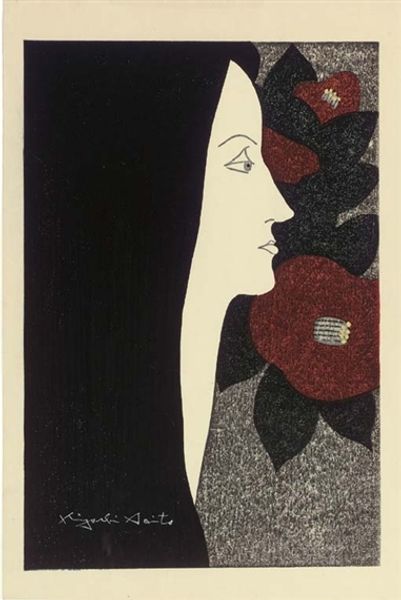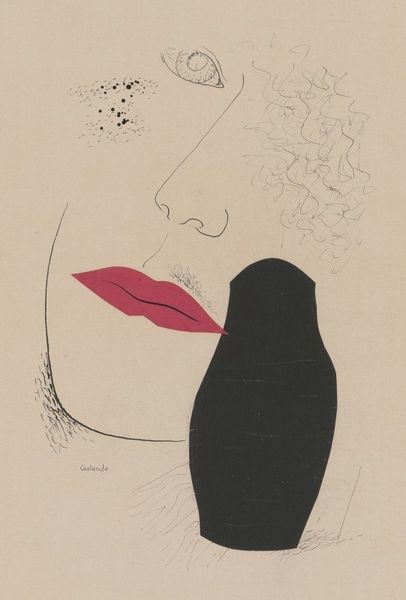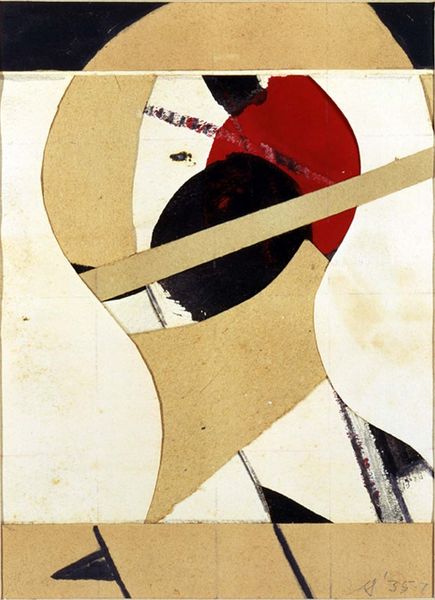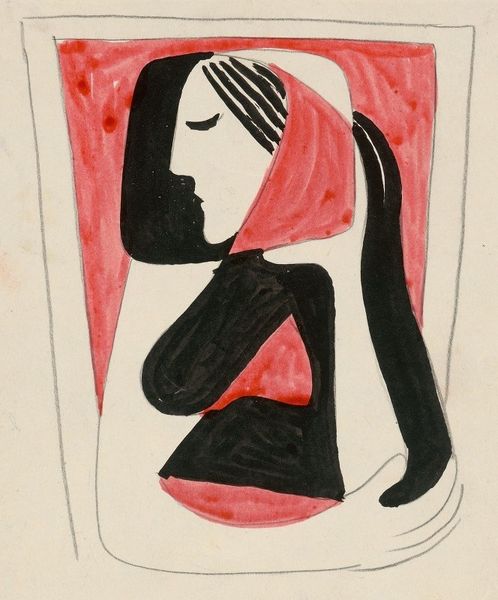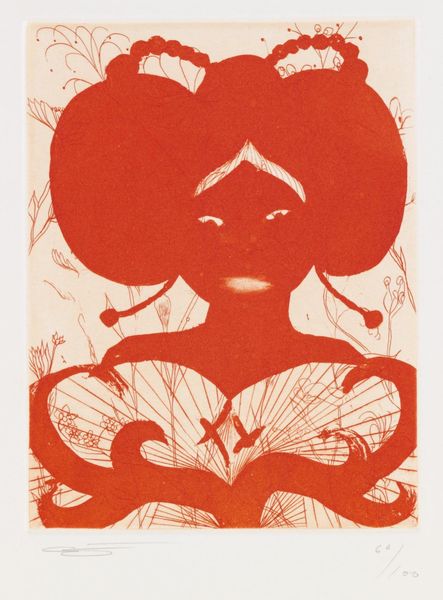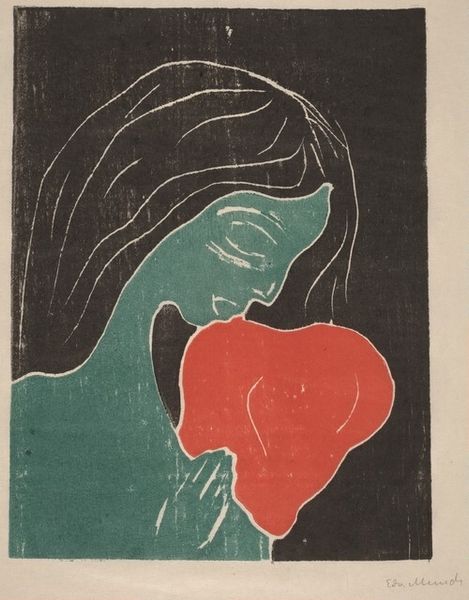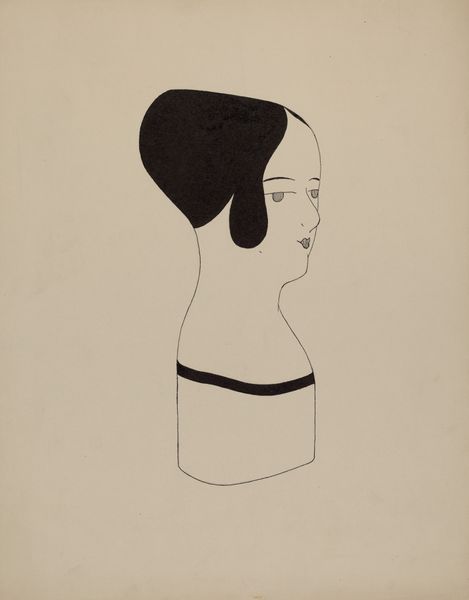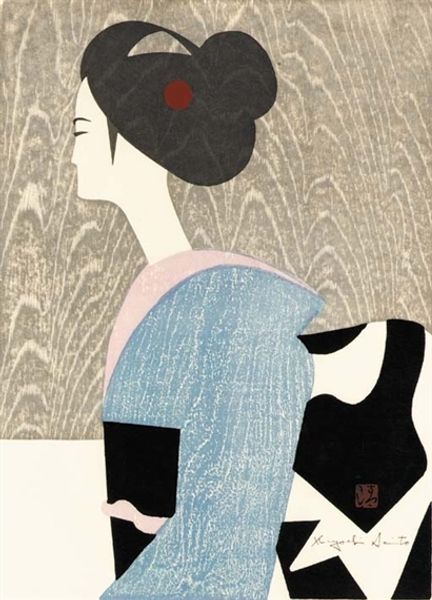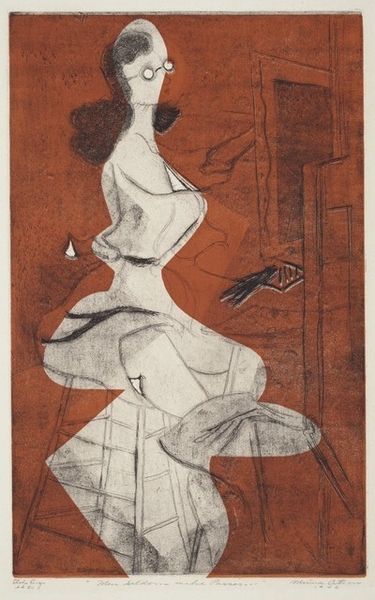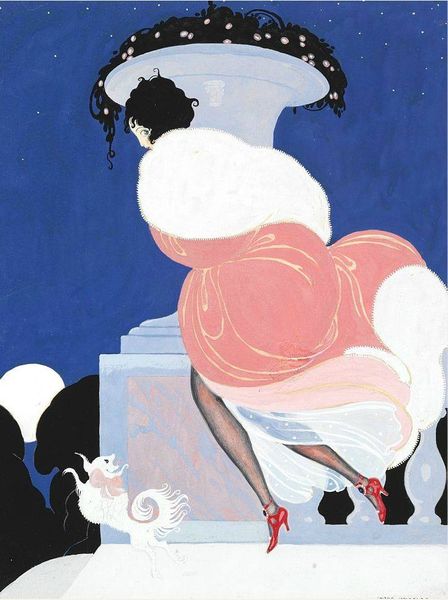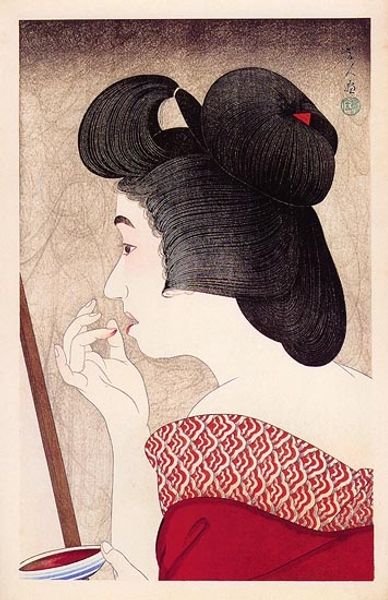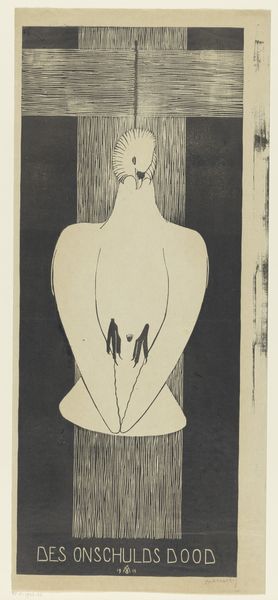
Copyright: Kiyoshi Saito,Fair Use
Curator: Kiyoshi Saito’s “Coral,” created in 1955, presents us with a striking woodcut print. I am immediately drawn to how simplified the composition is, almost austere in its presentation. Editor: It's amazing how evocative it remains despite such a minimalist approach. I see an almost archetypal feminine profile, rendered through distinct shapes and contrasting colors. It has a very subtle tension; the work has an unsettling calmness, as if something significant is about to be revealed. Curator: Note how Saito manipulates negative space, allowing the stark white of the woman's face to define her features. The black of her hair, a large, solid form, acts as an anchor, juxtaposed against the textured coral background. He even reduces the neck to just a sharp, geometric triangle, using color blocking to denote tonal change. Editor: That bright coral backdrop feels significant. In many cultures, coral represents protection and transformation, like a talisman against the dark mass of her hair. It contrasts so sharply with the cool black that there must be symbolism at play. Perhaps linking this portrait to the protective properties the mineral holds. It also resonates with concepts of beauty and luxury as much as the aforementioned themes. Curator: True, the title "Coral" is interesting; how does it apply here? Is the intent purely aesthetic, referencing the color, or does Saito suggest deeper meanings inherent to coral itself, woven into the portrait? He uses texture to give life to that coral backdrop that could resemble small branching coral organisms if you view it up close. Editor: The red dot at the base of her hair is curious, also like a single piece of Coral perhaps signifying energy and passion. This image also plays into established concepts of female beauty but challenges them using geometric abstraction, like it uses some Modernist elements in this reduction. The reduction of a face into shapes makes this almost a graphic statement and the bold outlines create that ‘pop’ to signal a connection to Pop Art—although the artwork precedes that style. It makes you reconsider conventional portrayals of women within that context, as an object versus the projection of individuality. Curator: Yes, Saito reduces the form to its most elemental components, using color and shape to distill a complex identity. The absence of detail becomes a powerful formal tool and an intellectual device. Editor: In summary, “Coral” is visually arresting and subtly challenges conventional interpretations of portraiture using abstract elements that highlight complex symbology. Curator: And, it's a wonderful demonstration of the power of simplified forms to convey complex concepts.
Comments
No comments
Be the first to comment and join the conversation on the ultimate creative platform.
